Day 2 – Morning
We drove to Dambulla from Colombo where the main attraction is the Cave Temple. Dambulla is about 158 km north of Colombo and takes a little more than 3 hours if you drive without any breaks. We stopped on the way to visit a few sites.
- Sri Sudarshanarama Raja Maha Viharaya
- Dambulla International Cricket Stadium
- Dambulla Cave Temple
Sri Sudarshanarama Raja Maha Viharaya – As you drive to Dambulla, you will pass by a row of eye-catching monk statues. We stopped to take a quick look. There was a temple at the end of the row of statues, but was not open.
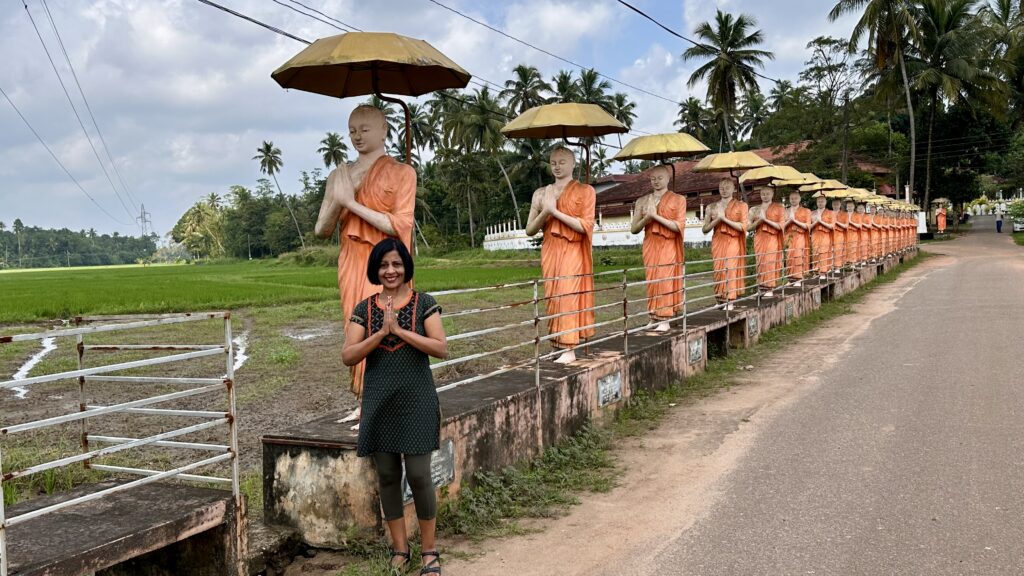
Rangiri Dambulla International Cricket Stadium – Built in a stunning location, the 30,000-seater stadium was constructed in just 167 days with the inaugural one-day international match being played between Sri Lanka and England in March 2000. Floodlights were installed in 2003. Although there was no cricket match in progress, the security guard at the entrance was kind enough to let us in. We spent 20 minutes here admiring the well maintained and scenic stadium and taking some snaps.
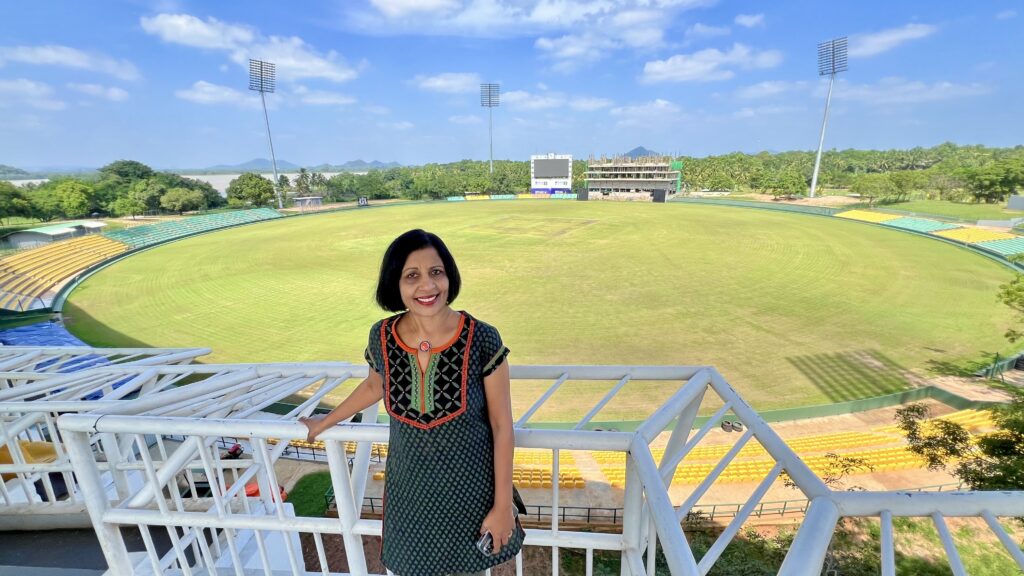
Dambulla cave temple – also known as the Golden Temple of Dambulla, it is the largest and best-preserved cave temple complex in Sri Lanka and dates back to the first century BCE. The rock towers 160 m over the surrounding plains. Although there are more than 80 documented caves in the surrounding area, the major attractions are spread over five caves, which contain statues and paintings related to Gautama Buddha and his life. There are a total of 153 Buddha statues in various pose. There are also a few statues of Sri Lankan kings and Hindu gods. It is a UNESCO World Heritage Site since 1991.
Cave 1 (Cave of the Divine King) – This cave is dominated by the 14-meter statue of the Buddha, hewn out of the rock. This cave reveals images of the last moments of Buddha and his disciple at his feet, distraught at the Buddha’s passing. This is Buddha’s death pose where his stomach is empty and his feet not aligned.
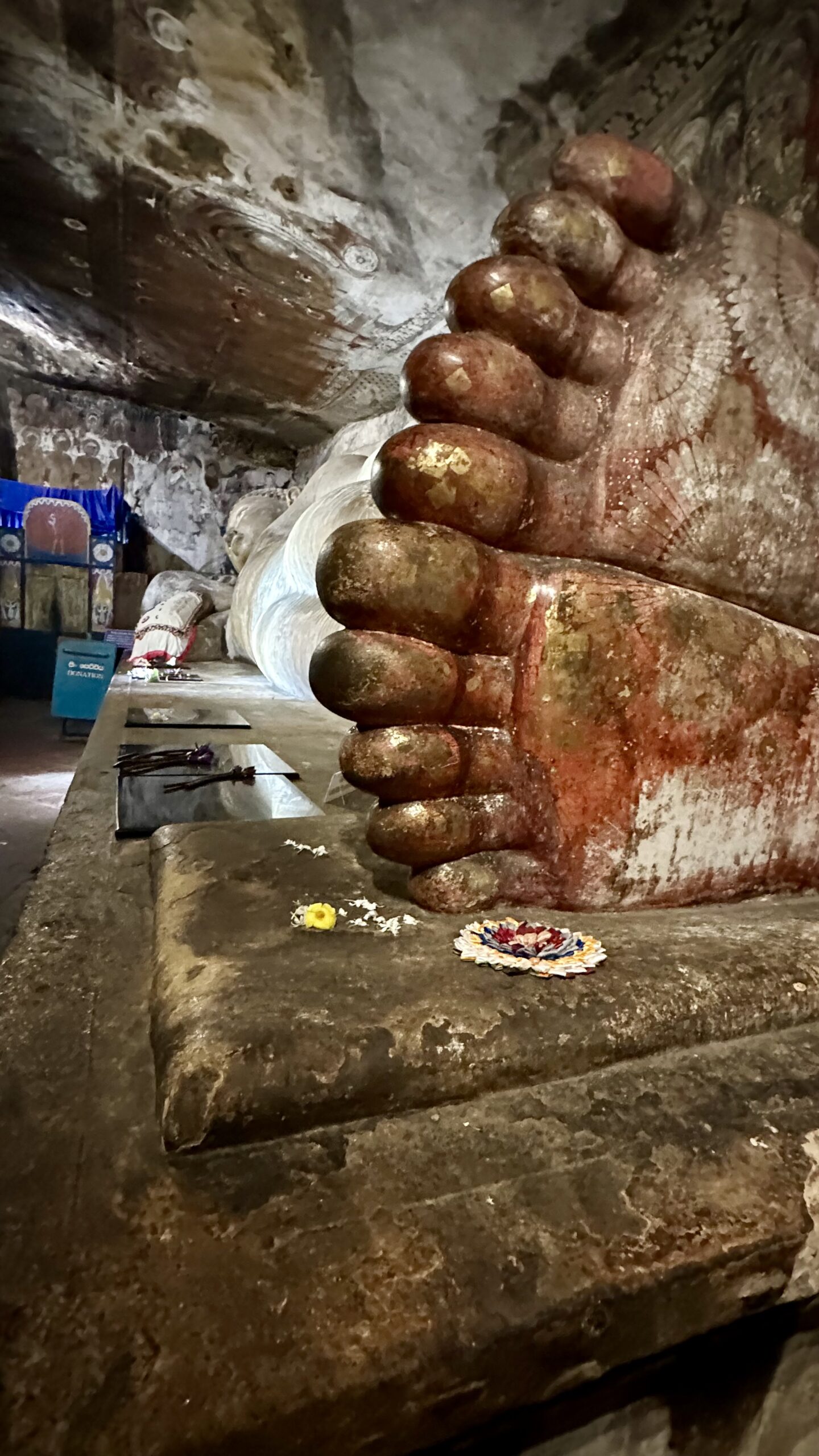
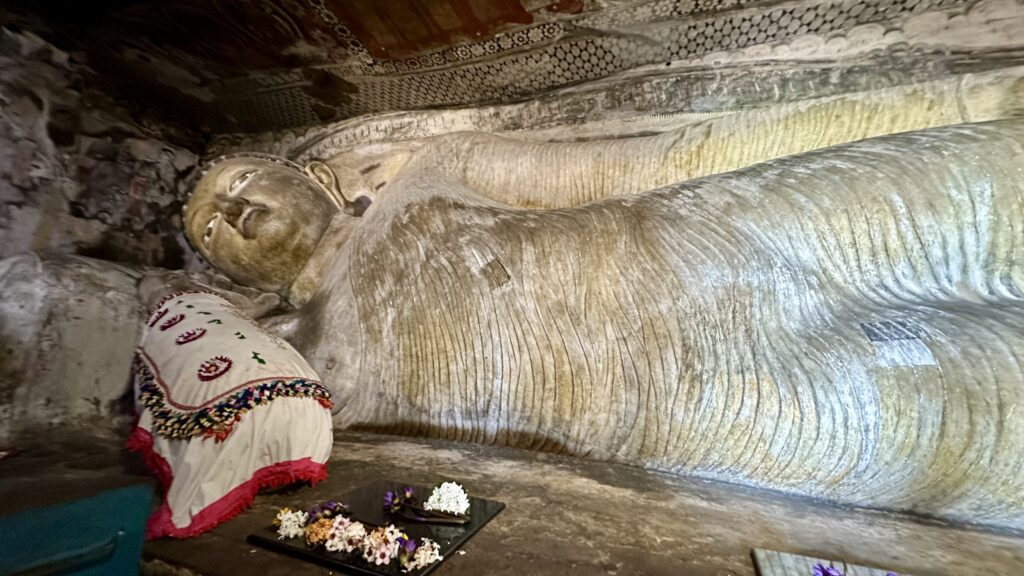
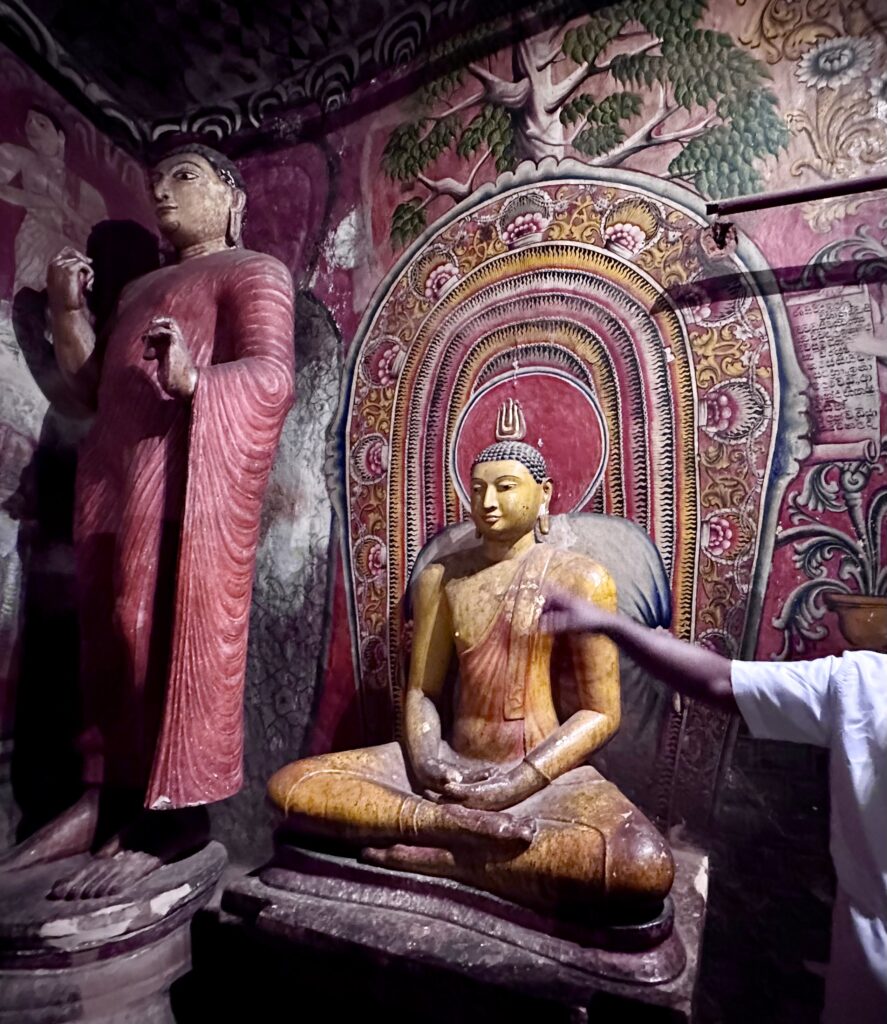
Cave 2 (Cave of Great Kings) – This is the most spectacular and colorful of the caves and features many of the 153 Buddha statues. The paintings in the cave depict Buddha’s life and his search for truth. There are 16 standing and 40 seated statues of Buddha in this cave as well as statues of King Vattagamani Abhaya and King Nissanka Malla. This cave is accordingly called Maharaja lena, “Cave of the Great Kings.” There is also a dagoba(or Stupa) and a spring which drips its water said to have healing powers, out of a crack in the ceiling.
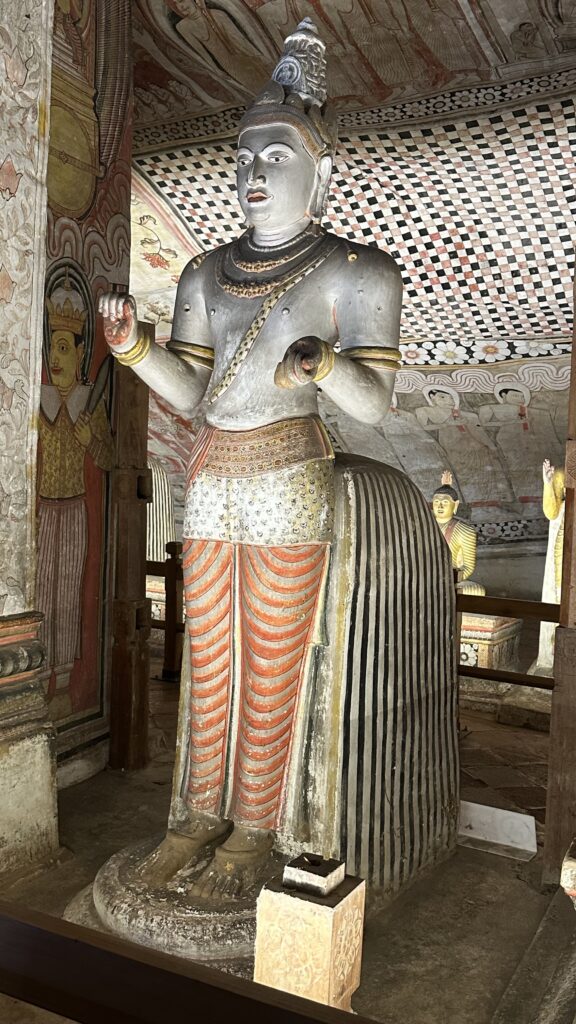
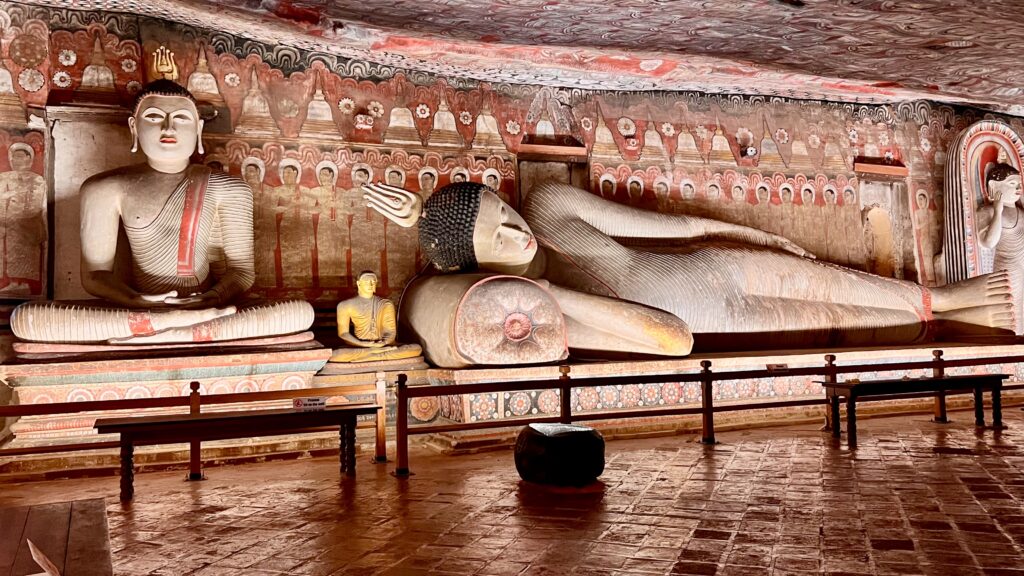

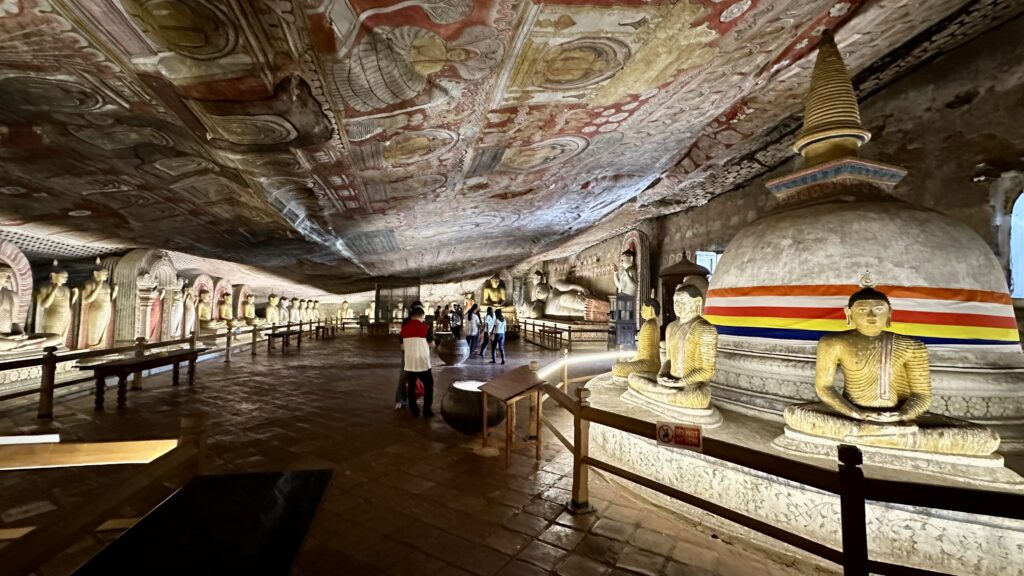
Cave 3 (Great New Monastery) – This cave’s wall paintings were done during the reign of King Kirti Sri Rajasinha (1747–1782), the famous Buddhist revivalist. In addition to the 50 Buddha statues, there is also a statue of the king.
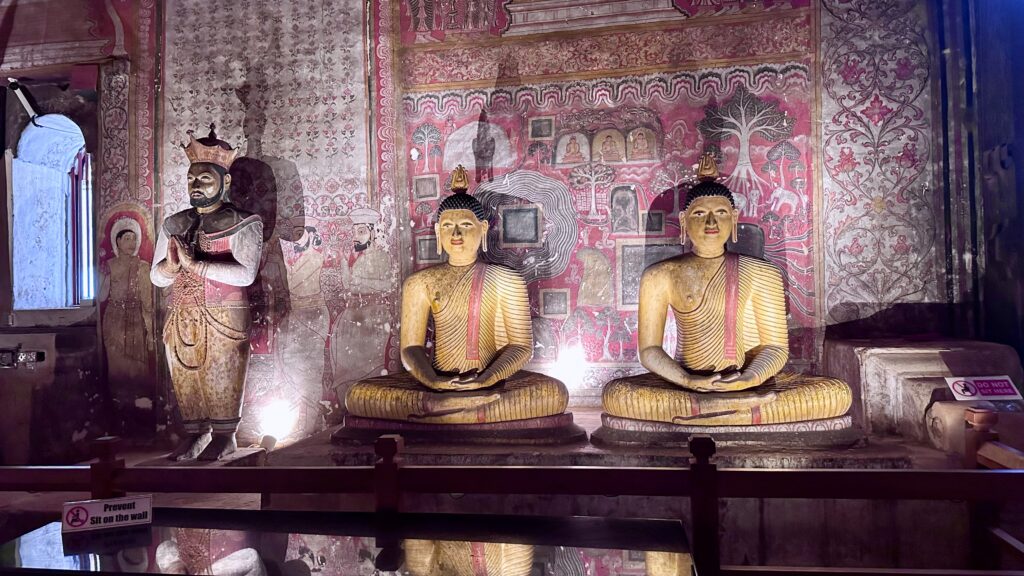
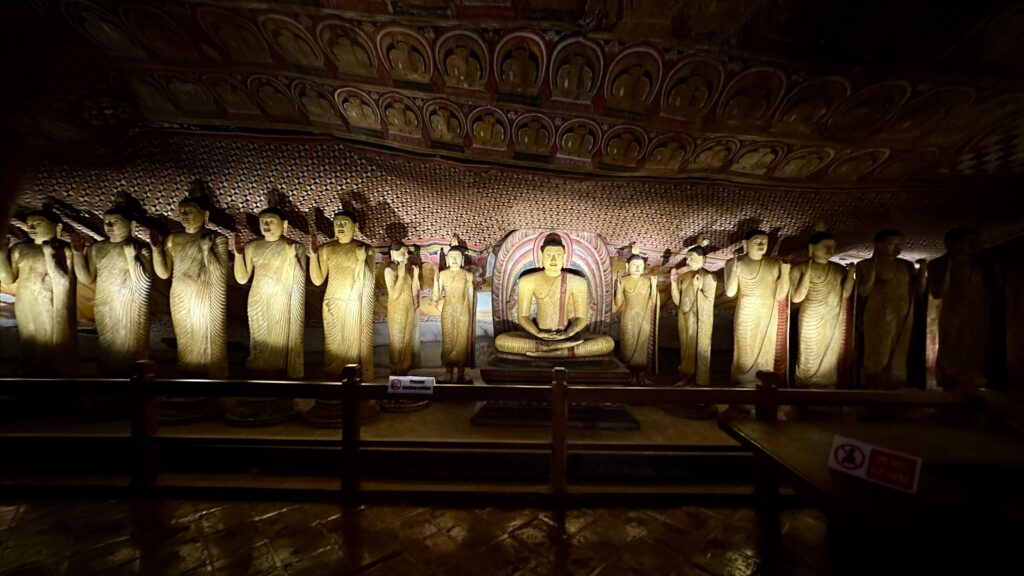
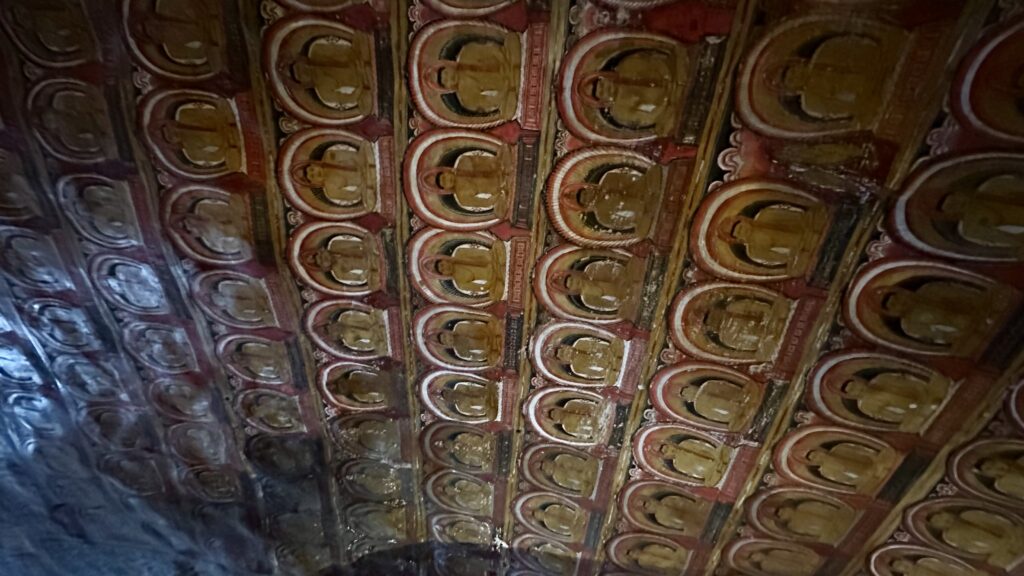
Cave 4 – This cave features a serene Buddha in a meditative pose, a small Stupa, paintings and statues of Buddha.
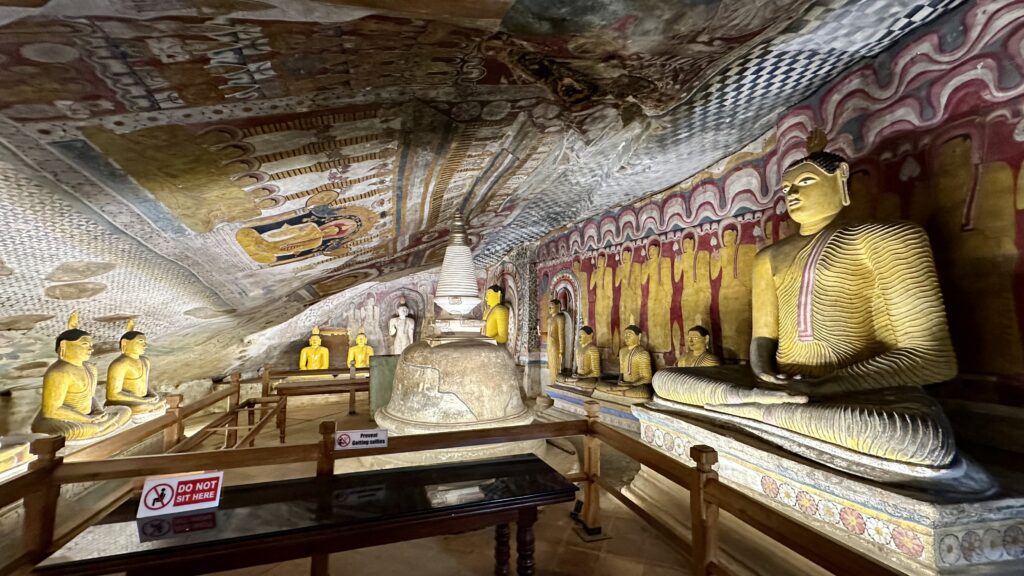
Cave 5 (Devana Alut Viharaya or The Cave of ‘Second New Temple’) – This cave is the most recent and features numerous images and Buddha statues. The images at the other caves are created out of granite rock and in this cave, they are built from brick and plaster.
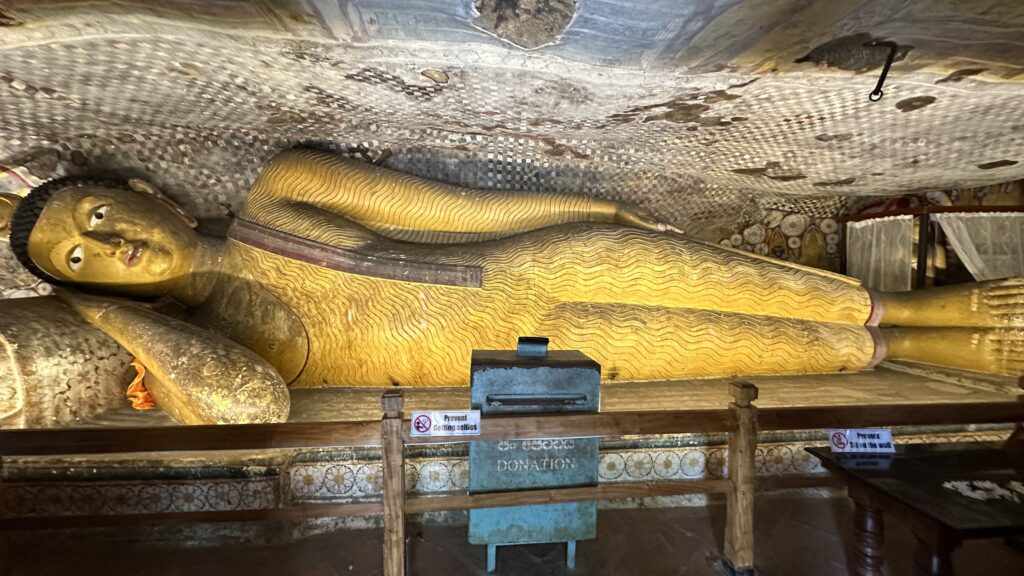
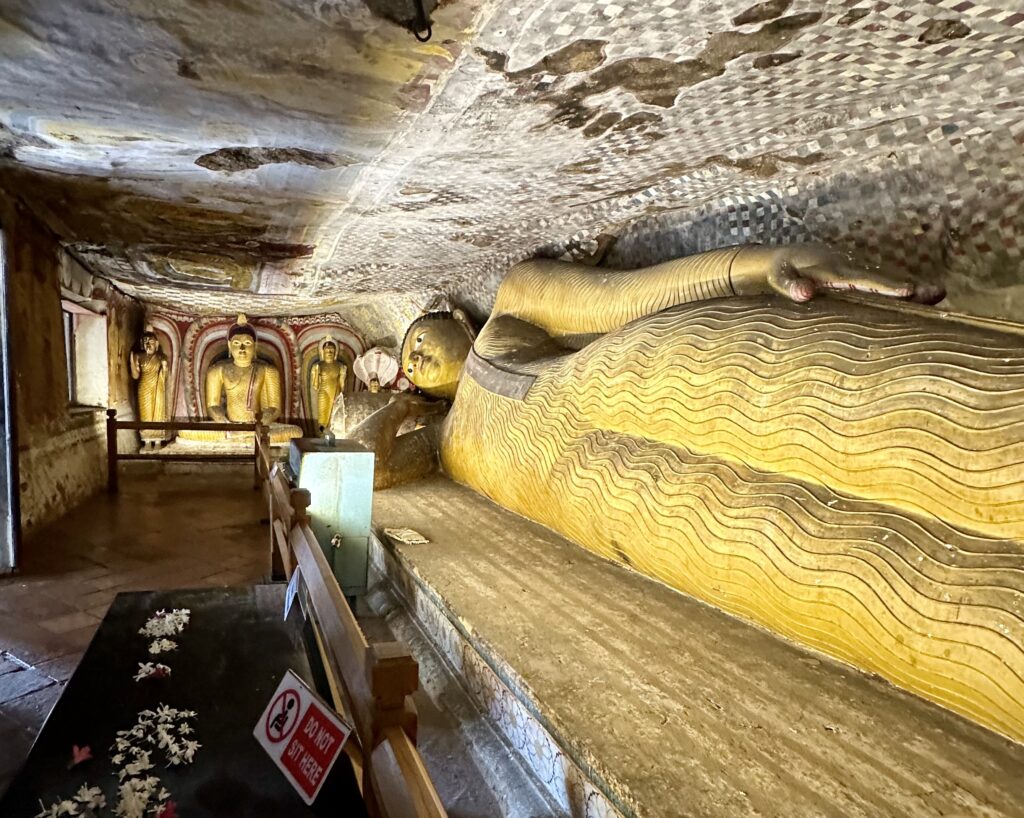
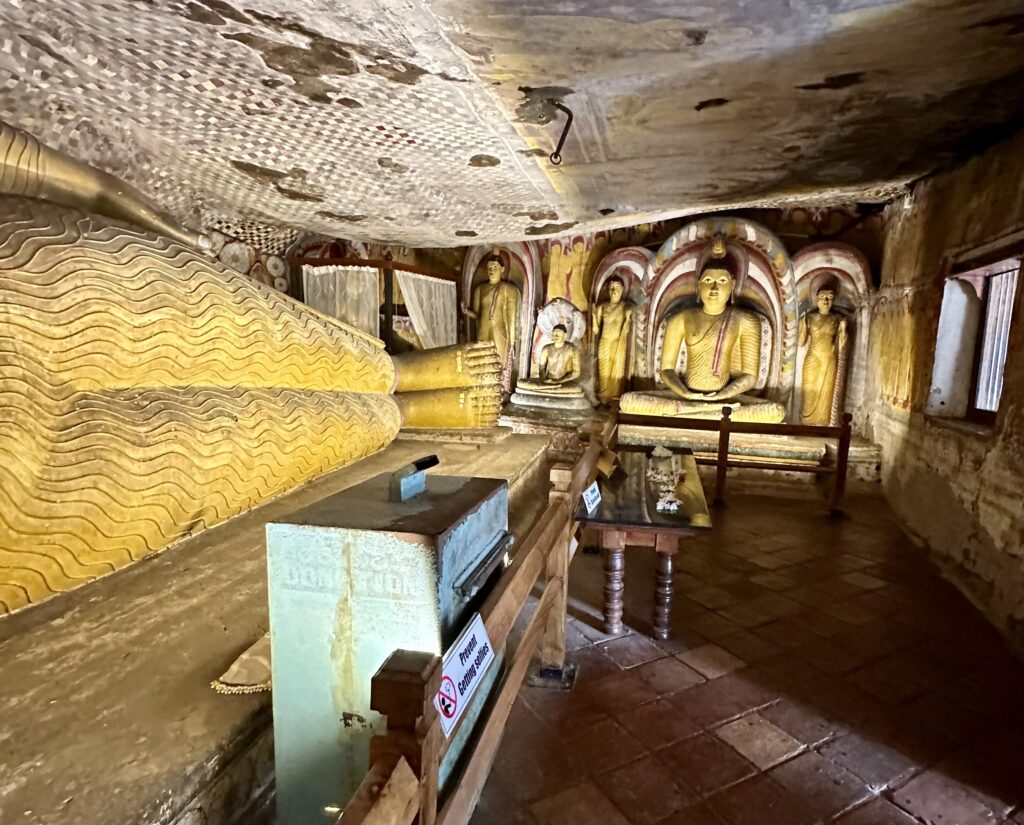
Dambulla Cave temple, is also called the Golden Dambulla temple because of the statue of the huge golden Buddha sitting at the bottom of the hill in the dhammachakka mudra (wheel-turning pose) above a bright red-lipped, open-mouthed dragon. The golden Buddha and a golden pagoda (Stupa) was constructed in the 20th century.
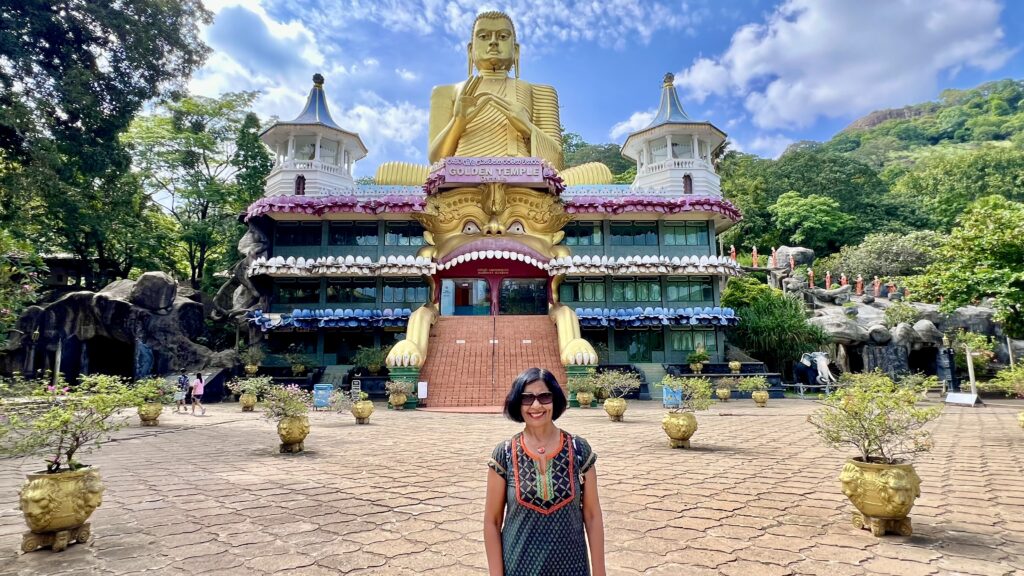
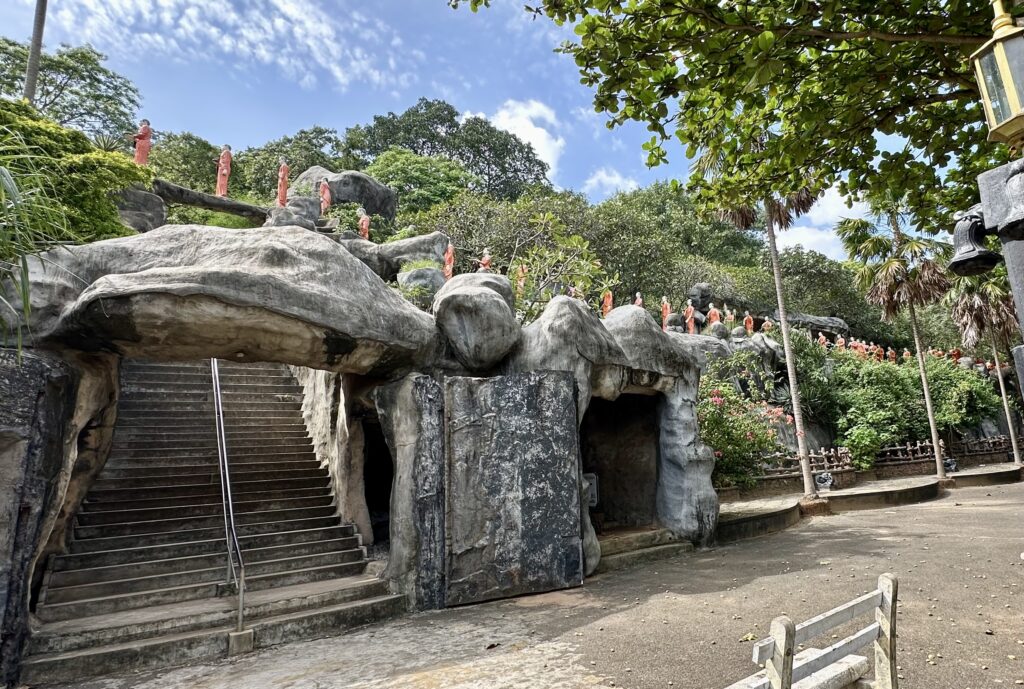
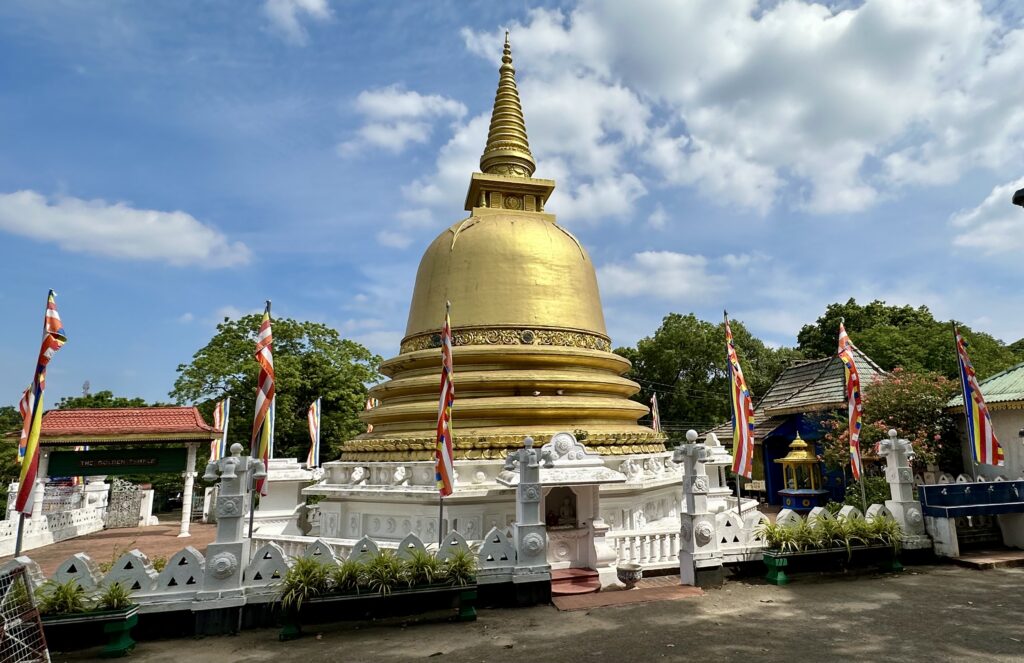
Plan on spending 2-3 hours to visit the Cave temple followed by the Golden Buddha. You have to climb a total of about 360 steps to the Cave temple. We took a guided tour of the 5 caves which was 45 min long. Following this, we climbed down a flight of stairs on the other side, to see the Golden Buddha. Since we were driven to this place, the driver dropped us at the entrance to the cave temple and picked us up near the Golden Buddha.